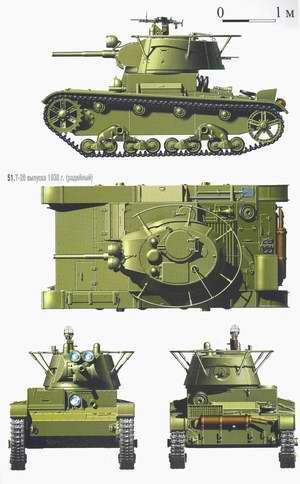 |
T-26 of the year 1938 production equipped with radio [7] |
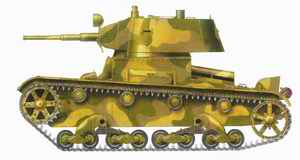 |
T-26 Mod. 1938. Equipped with searchlights for night combat and tricolor camouflage. There is also a white cross air identification sign on the turret roof. The 56th Tank Brigade of the Crimean Front, March 1942 [2] |
 |
T-26s mod 1938 (foreground) and mod. 1933 (background) organic to the 6th Tank Brigade whose command personnel is preparing to the upcoming combat. South-eastern Front, August 1942.[4] |
 |
A T-26 mod. 1938 tank
assigned to the 6th Tank Brigade. South-Eastern Front, August
1942 [4] |
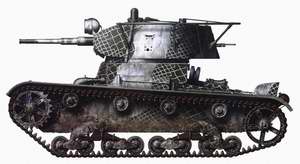 |
Т-26 tank mod. 1939 painted in winter colors. [8]
Rem. AMVAS: probably the battle of Moscow, 1941 |
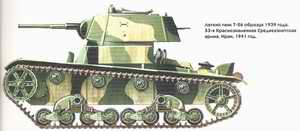 |
T-26 Mod. 1939. The 53rd Middle Asian Army. Iran, 1941 [1] |
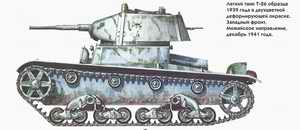 |
T-26 Mod. 1939 light tank in two-tone winter camouflage colours. Western Front, Mozhaisk direction, December, 1941.[1] |
 |
T-26 Mod. 1939. The 34th Tank Division/8th Mechanised Corps. South-Western Front. Summer 1941 [1] |
 |
T-26 Mod. 1939. It has tri-tone camouflage and tactical marking (continuous white strap - the 2nd company, broken white strap - the 2nd platoon), which had no use in 1941. The Crimean Front, the 55th Tank Brigade, March 1942 [2]
|
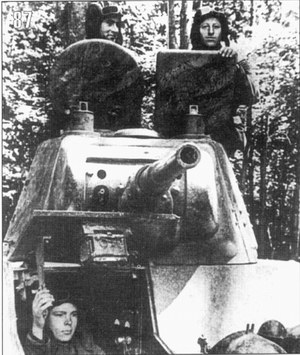 |
Tanks T-26 of model 1939 from the 18th Tank Division/7th Mechanised Corps. The combat vehicles have a three-colour zebra-like camouflage consisting of light green and brown stripes on medium green background. Belarus, early July 1941. [5] |
 |
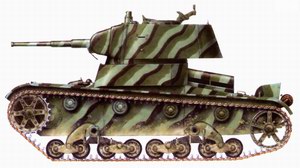 |
T-26 tank of model 1939, (most probably) belonging to the 18th Tank Division/7th Mechanized Corps. Byelorussia, early July 1941. [5] |
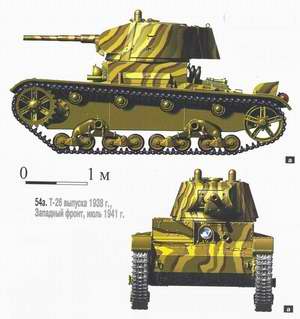 |
T-26 of the year 1938 production. western Front, July 1941 [7] |
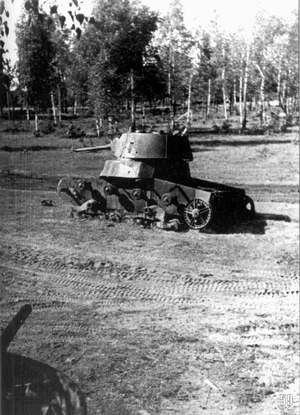 |
Destroyed tanks T-26 of various modifications (of models 1933 and 1939) from the 6th Mechanised Corps. The pictures were taken in 1944, already after liberation of Byelorussia by the Soviet troops. On the background are westbound moving tanks T-34/85 [5]
More photos of this vehicle are here |
 |
Light infantry support tank T-26 of model 1939 from the 6th Mechanized Corps. Judging by the number "1" on the turret and on the box below the turret, this belonged to a battalion commander. Byelorussia, June 1941.[5] |
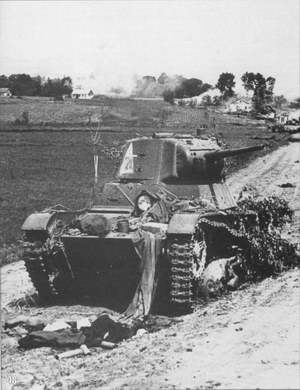 |
T-26 Mod. 1939. Ukraine 1941. [9]
Rem. AMVAS: There are different versions about triangle on its turret whether it was tactical, or painted by German traffic control services. My guess is this symbol was for recognition of Soviet aviation. Different figures (triangles, rhombs etc) could be temporarily assigned to different units in June-July 1941. |
 |
Т-26 tank model 1939 . with a semblance of a white triangle on the turret. 68th Tank Regiment/34th Tank Division /8th Mechanised Corps. South-Western Front, June 1941.[10] |
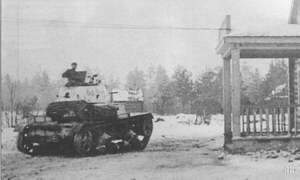 |
T-26 Mod. 1939 in winter camouflage. Supposingly from the 40th Light Tank Brigade. Karelian isthmus, February1940. Only the upper part of the hull and turret is painted white, and on the side there is a tactical mark - red «00». The top of the turret hadn't ever been painted white for the sake of air support [6] |
 |
T-26 Mod. 1939 in winter camouflage. Conceivably the 40th Light Tank Brigade. Karelian Isthmus, Feb. 1940. Turret roof have no winter camouflage for air recognition [6] |
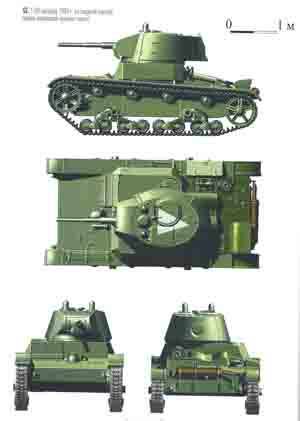 |
T-26 mod. 1939 with welded gun mask. Machine-gun from rear recess removed.[7] |
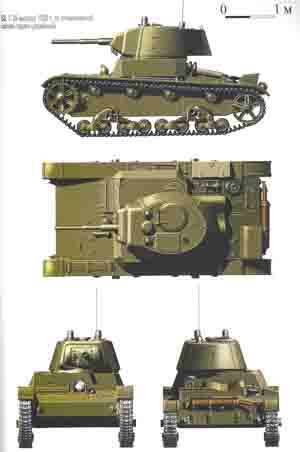 |
T-26 mod. 1939 with stamped gun mask.[7] |
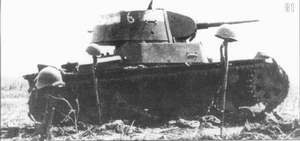 |
Light tank T-26 of the 1939 model evidently belonging to the 39th Tank Division/16th Mechanised Corps. Vicinity of Uman, early August 1941.[3]
Rem. AMVAS. According to [7] this vehicle belonged to the 18th Mechcorps |
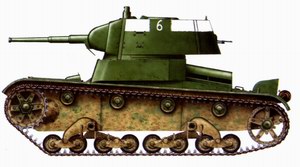 |
 |
T-26 of the 1940 year production organic to the 18th Mechcorps. Uman area, Aug. 1941[7]
Rem. AMVAS. According to [3] this vehicle belonged to the 39th Tank division/16th Mechcorps |